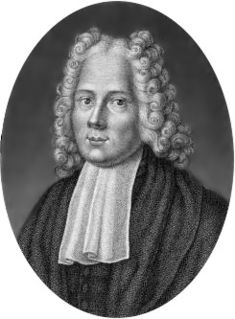 W
WMaria Gaetana Agnesi was an Italian mathematician, philosopher, theologian, and humanitarian. She was the first woman to write a mathematics handbook and the first woman appointed as a mathematics professor at a university.
 W
WVincenzo Brunacci was an Italian mathematician born in Florence. He was professor of Matematica sublime in Pavia. He transmitted Lagrange's ideas to his pupils, including Ottaviano Fabrizio Mossotti, Antonio Bordoni and Gabrio Piola.
 W
WPaolo Casati was an Italian Jesuit mathematician. Born in Piacenza to a Milanese family, he joined the Jesuits in 1634. After completing his mathematical and theological studies, he moved to Rome, where he assumed the position of professor at the Collegio Romano. He was given the chair in mathematics after teaching philosophy and theology.
 W
WGiovanni Domenico Cassini, also known as Jean-Dominique Cassini was an Italian mathematician, astronomer and engineer. Cassini was born in Perinaldo, near Imperia, at that time in the County of Nice, part of the Savoyard state. Cassini is known for his work in the fields of astronomy and engineering. Cassini discovered four satellites of the planet Saturn and noted the division of the rings of Saturn; the Cassini Division was named after him. Giovanni Domenico Cassini was also the first of his family to begin work on the project of creating a topographic map of France.
 W
WFrancesco Cetti was an Italian Jesuit priest, zoologist and mathematician.
 W
WTommaso Ceva was an Italian Jesuit mathematician from Milan. He was the brother of Giovanni Ceva.
 W
WDomenico Cocoli (1747–1812) was an Italian mathematician and physicist, especially active on hydraulics. He was a top physicist of the late Republic of Venice, then of the Napoleonic Italian Republic.
 W
WGregorio Fontana, born Giovanni Battista Lorenzo Fontana was an Italian mathematician and a religious of the Piarist order. He was chair of mathematics at the university of Pavia succeeding Roger Joseph Boscovich. He has been credited with the introduction of polar coordinates.
 W
WVittorio Fossombroni was an Italian statesman, mathematician, economist and engineer.
 W
WPaolo Frisi was an Italian mathematician and astronomer.
 W
WAlessandro Maria Gaetano Galilei was an Italian mathematician, architect and theorist, a member of the same patrician family of Galileo.
 W
WDom Guido Grandi, O.S.B. Cam. was an Italian monk, priest, philosopher, theologian, mathematician, and engineer.
 W
WJoseph-Louis Lagrange, also reported as Giuseppe Luigi Lagrange or Lagrangia, was an Italian mathematician and astronomer, later naturalized French. He made significant contributions to the fields of analysis, number theory, and both classical and celestial mechanics.
 W
WGiovanni Francesco Giuseppe Malfatti, also known as Gian Francesco or Gianfrancesco was an Italian mathematician. He was born in Ala, Trentino, Italy and died in Ferrara.
 W
WAlessandro Marchetti was an Italian mathematician, noted for criticizing some conclusions of Guido Grandi, a student of Giovanni Alfonso Borelli who was influenced by Galileo and Aristotle.
 W
WLorenzo Mascheroni was an Italian mathematician.
 W
WGiovanni Battista Nicolai was an Italian mathematician.
 W
WErmenegildo Pini (1739–1825) was an Italian clergyman, naturalist, mathematician, geologist and philosopher. He belonged to the Barnabite Order and worked mainly in northern Italy. He attempted to examine scientific ideas on geological phenomena and fossils and show them as being consistent with the framework of Biblical Genesis.
 W
WGabrio Piola was an Italian mathematician and physicist, member of the Lombardo Institute of Science, Letters and Arts. He studied in particular the mechanics of the continuous, linking his name to the tensors called Piola-Kirchhoff.
 W
WFrancesco Maria De Regi was an Italian mathematician.
 W
WFilippo Antonio Revelli was an Italian mathematician.
 W
WFortunato Riccardo was an Italian mathematician.
 W
WJacopo Francesco Riccati was a Venetian mathematician and jurist from Venice. He is best known for having studied the equation which bears his name.
 W
WVincenzo Riccati was a Venetian mathematician and physicist.
 W
WPaolo Ruffini was an Italian mathematician and philosopher.
 W
WGiovanni Girolamo Saccheri was an Italian Jesuit priest, scholastic philosopher, and mathematician.
 W
WGiovanni Francesco Mauro Melchiorre Salvemini di Castiglione FRS was an Italian mathematician and astronomer.
 W
WGiuseppe Santini (1735–1796) was an Italian abbot and a mathematician.
 W
WFederico Sanvitale was an Italian mathematician and Jesuit.
 W
WGiordano Vitale or Vitale Giordano was an Italian mathematician. He is best known for his theorem on Saccheri quadrilaterals. He may also be referred to as Vitale Giordani, Vitale Giordano da Bitonto, and simply Giordano.
 W
WLeonardo Ximenes was a famous Italian Jesuit mathematician, engineer, astronomer and geographer from Sicily.